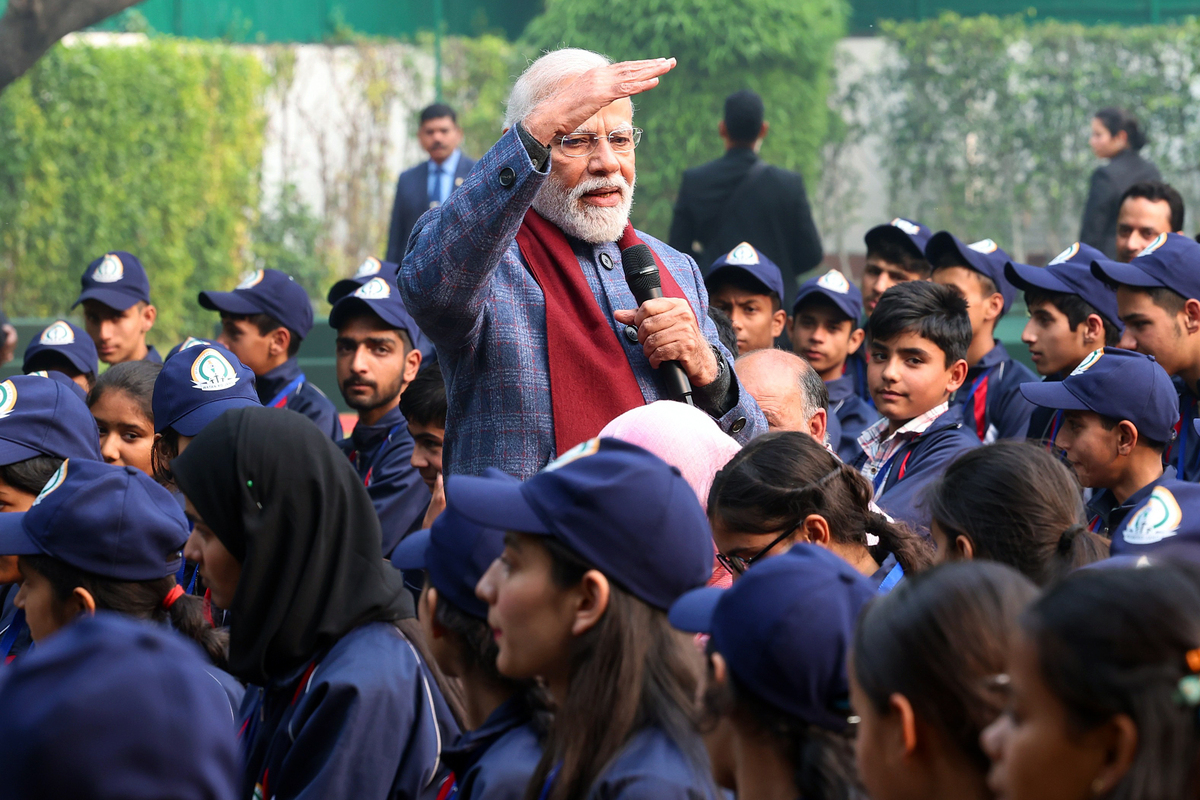Hazrat Amir Khusrau described Sanskrit as the world’s best language: PM
Prime Minister Narendra Modi on Friday said that Hazrat Amir Khusrau described India as greater than all the big countries of the world at that time.
In the heart of the Himalayas lies a region that has been a crucible of contention for decades.

Prime Minister Narendra Modi interacts with 250 students from Jammu and Kashmir as part of their 'Watan Ko Jano' program, in New Delhi on Sunday. (ANI Photo)
In the heart of the Himalayas lies a region that has been a crucible of contention for decades. Prime Minister Narendra Modi’s visit to Jammu and Kashmir sends ripples through the political landscape, echoing the seismic shifts triggered by the abrogation of Article 370 in 2019. As he stood in Srinagar, Mr Modi proclaimed a transformed Kashmir, now seamlessly integrated into the fabric of India.
The abrogation of Article 370, a move that stripped Jammu and Kashmir of its special status, was a contentious decision, sparking heated debates on constitutional legality and its geopolitical ramifications. Mr Modi’s visit, the first in five years, underscores the government’s commitment to its core promise ~ the integration of Kashmir into the Indian Union. However, the optics and motivations behind this visit warrant a closer examination. For many, especially those outside the region, the transformation of Kashmir might seem like a laudable achievement. Mr Modi, in his address, emphasised the newfound courage of the people to overcome challenges and touted the developmental strides made in the last five years. The launch of tourism and farm projects adds a forward-looking dimension, projecting Kashmir as a potential global success story.
Advertisement
Yet, amid the applause, there lingers a complex tapestry of historical grievances, geopolitical tensions, and human rights concerns. The region, scarred by decades of militant violence, is also a flashpoint in the longstanding rivalry between India and Pakistan. The visit, strategically timed weeks before general elections, serves not only as a reaffirmation of the government’s commitment but also as a political signal to voters. The lockdown-like security measures during Mr Modi’s visit ~ armed personnel, commandos on Dal Lake, and a ban on drone usage ~ reflect the ongoing fragility of the situation. Schools were shut, and exams postponed, showcasing the delicate balance between asserting control and managing potential unrest.
Advertisement
Kashmiri politicians critical of the abrogation, like Ms Mehbooba Mufti, have framed the visit as a political manoeuvre to sway the BJP’s core constituency in the rest of the country in the upcoming elections. The promise of a new elected legislative assembly for Jammu and Kashmir, coupled with infrastructure projects, paints a vision of progress. However, the absence of elections and the Supreme Court’s directive to hold polls by September 30 injects an element of uncertainty. The political landscape in Kashmir remains a puzzle, with pieces yet to fall into place.
As this story unfolds, it provokes essential questions about the nature of transformation and development. The answers may determine not only the fate of Kashmir but also the trajectory of India’s democratic experiment. In the global arena, where geopolitical tensions draw attention to this sensitive region, Mr Modi’s visit amplifies the complexities surrounding Kashmir. The story of Kashmir, as it continues to evolve, demands nuanced attention, transcending electoral calculus to navigate the delicate interplay of history, politics, and human rights.
Advertisement